Claudia Goldin
Biographical
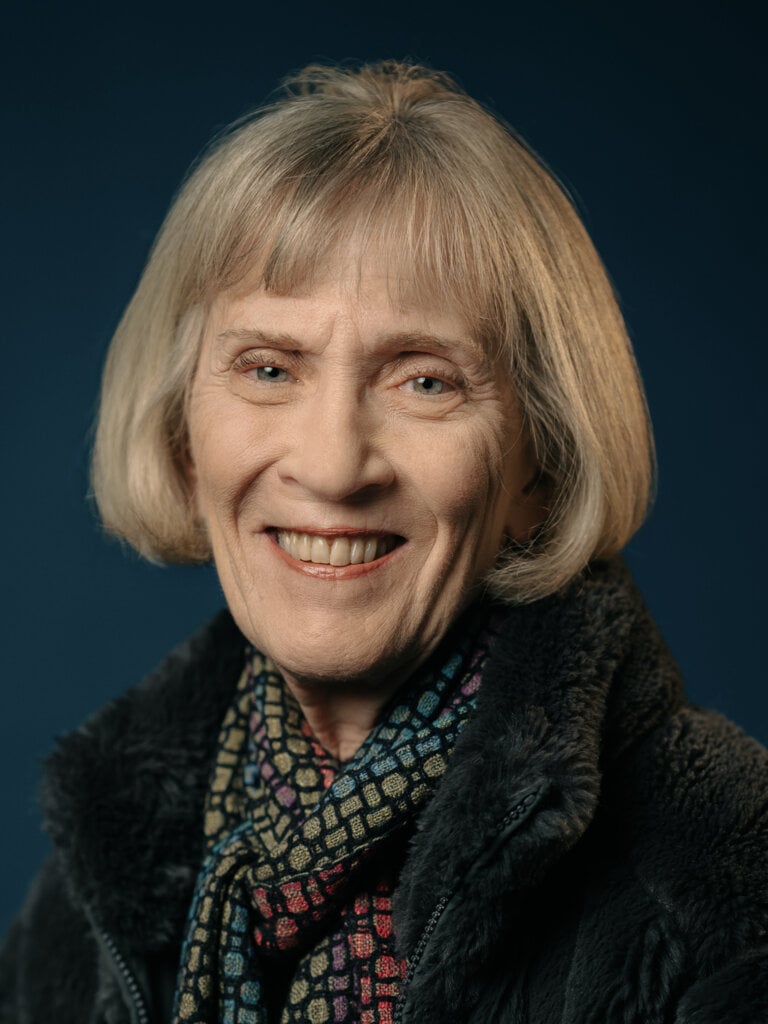
The Economist as Detective
Ihave always wanted to be a detective. As a young child in New York City, I was determined to uncover the secrets of the mummies at the Museum of Natural History. I grew up in the Parkchester section of the Bronx, New York with my parents and older sister, Judy. I was a happy and vivacious child (Fig. 1) filled with curiosity. My mother became an early childhood teacher when I was about five years old (typical of many in her cohort) and later was an assistant principal at Public School 105 in the Bronx. My father was a middle manager, eventually at Burlington Industries, where he was in charge of data processing, programmed an IBM 360, and supervised a bevy of key-punch operators.
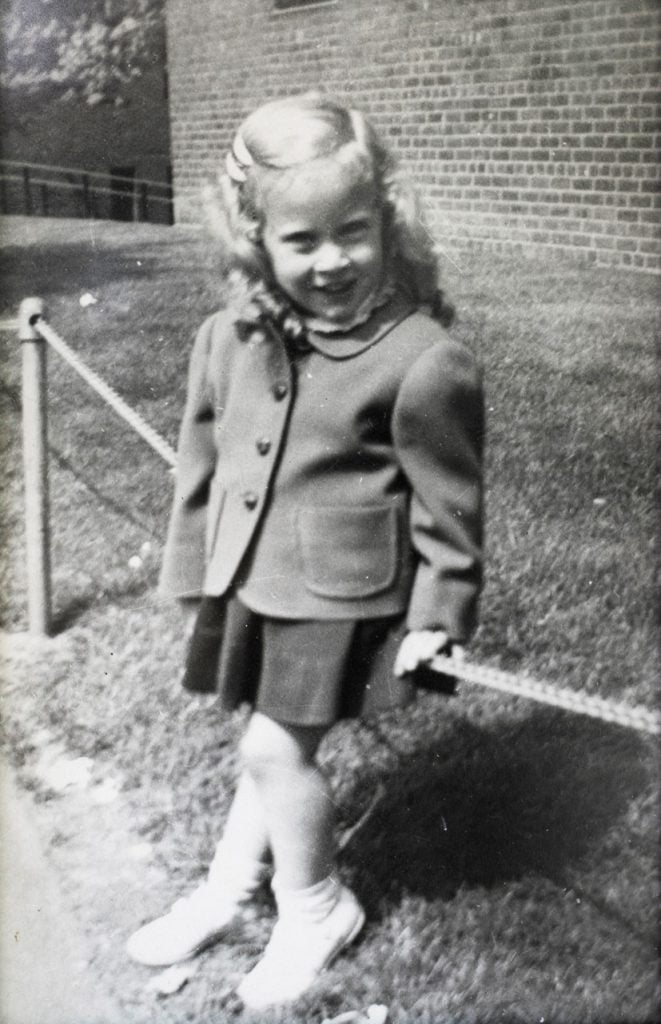
I took advantage of much that NYC had to offer – young people’s concerts at Carnegie Hall with Lenny Bernstein, ice skating at Wollman Memorial, folk music in Greenwich Village, window shopping, and of course, the museums. But when I encountered Paul de Kruif’s Microbe Hunters in junior high school, I realized a new calling – bacteriology.1 I would be a micro hunter myself.
I had the good fortune of attending the Bronx High School of Science, where I studied the subject that had, long before, brought fame to Koch, Pasteur, Lister, and others who sought the causes of infectious disease. But it wasn’t fame I craved; it was the thrill of discovery.
In the summer of my junior year in high school, I took an undergraduate bacteriology course at Cornell University as part of a program sponsored by the U.S. National Science Foundation. (Fig. 2) A year later I entered Cornell as an undergraduate with the objective of majoring in microbiology. But college introduced me to other subjects about which I knew too little and to new worlds to discover.
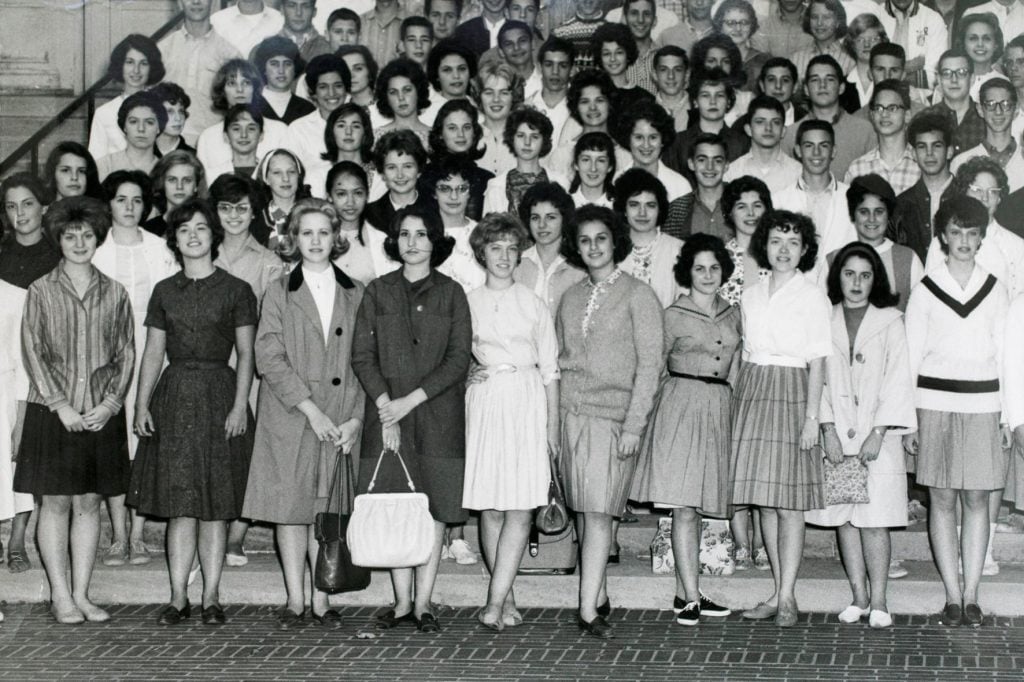
In my sophomore year at Cornell, I encountered Alfred (Fred) Kahn, whose utter delight in using economics to uncover hidden truths did for economics what de Kruif’s stories had done for microbiology.2 I had found my new major. I abandoned my microscope and moved my detective work to libraries, dusty archives, and, much later, large electronic data sets.
After earning my B.A. in economics at Cornell, I entered graduate school at the University of Chicago to continue my study of industrial organization and regulation begun with Kahn. It was almost pure luck to have chosen Chicago, and I don’t know what led me to believe that it would have been a great place to study and to live. Hyde Park was, in fact, was a lousy place to live in 1967; it was unsafe and had few amenities. But it was the very best place to begin graduate work.
The greatest economists were in Chicago – Milton Friedman, George Stigler, Gary Becker (a year later), Arnold Harberger, Robert Fogel, Lester Telser, Deirdre McCloskey, Zvi Griliches, Ronald Coase, Robert Mundell, Gregg Lewis, Harry Johnson, among others – and they taught with religious zeal.3 I did exams in both industrial organization and labor economics, although I ultimately wrote in the field of economic history.
My first project as an economic historian was my dissertation. It began as a term-paper in a course taught by Robert Fogel and concerned the role of slavery in the urban and industrial development of the antebellum South. Fogel strongly encouraged me to expand it into my dissertation, although it was several years later that I would discover his broader interests in the history of slavery. I was persuaded to write a dissertation in economic history and to call myself an economic historian.
I had loved growing up in NYC, but I had always known something was missing. As a child, I longed for nature and animals. Graduate school gave me the chance to learn the joys of hiking, backpacking, birds, flowers, and, most importantly, dogs. I got my first Golden Retriever, Kelso, in 1970. I also learned to drive, since as a New Yorker I hadn’t. It may seem odd that I discovered mountaineering in Chicago, but the Rockies were just a (long) day’s drive away, and I was fortunate to find a group of rock climbers, backpackers, and naturalists at the University of Chicago to show me the ropes.
After graduate school, I took an assistant professor position at the University of Wisconsin–Madison largely because it was a great place to learn more economic history. It had the editors of the two major U.S. journals in the field and several other economic historians. I had no clear vision of my future.
I continued to work on the economic history of the South: the Civil War, emancipation, the post-bellum era, and the role of slavery in the labor force participation of Black women after emancipation. It was a heady period in the field of economic history (see Goldin 1995a), a great time to be doing economic history and to be studying the economics of the American South and the history of Black Americans. But, looking back, I was searching for something of deeper personal interest.
As one of my teachers, Ronald Coase, has noted about his own experiences: “I came to realize where I had been going only after I arrived.”4
When I began at Wisconsin, I taught a class of around 250+ students, including most on the football team, in an enormous room with clanking radiators and a blackboard I could hardly reach. I used an overhead projector. It was a drafty room, and I could hold down either my mini-skirt or the slides. I had never taught before and, looking back, I find it astounding that I was entrusted with this large and potentially unruly class.
Despite my inexperience, I was a highly effective teacher of the large economics principles and intermediate theory courses at Wisconsin. And I continued teaching these courses at Princeton and at the University of Pennsylvania.
I left Wisconsin two years after I began as an assistant professor in part because of an incident involving Kelso. I brought her to my office, because I had to walk through a wooded area to get my car and I worked late. One day, I was handed a violation (written on a traffic ticket) by a Wisconsin state trooper who came to my office wearing the characteristic wide-brimmed hat and high leather boots of the state police and carrying two revolvers on his hips (not intended for me or my dog Kelso). He was enforcing a little-known late nineteenth century law that banned animals (like pigs, not Golden Retrievers) from entering state office buildings. Why the law was used against me and Kelso had much to do with a recent history at UW of violent anti-war demonstrations and the fact that the animal control officer thought I was a student. I soon moved to Princeton University where Kelso was welcome and I was an assistant professor.
After I moved to Princeton, my work began to focus on family decisions in the late nineteenth and early twentieth centuries about who worked and went to school, when children left home, where the family resided, and so on. The work sustained me for some time, but around the late 1970s I realized that something was missing. I was slighting the family member who would undergo the most profound change over the long run – the wife and mother. I neglected her because the sources had. Women were in the data when young and single and often when widowed. But their stories were faintly heard after they married, for they were often not producing goods and services in sectors that were, or would be, included in GNP.
In 1979, I moved to the University of Pennsylvania from Princeton (both institutions, by the way, generously allowed Kelso to be in my office). I had been denied tenure at Princeton. But I was not surprised since there was little interest in my work. Unpardonably to us today, I was never asked to give a seminar when I was at Princeton and never even gave one when I interviewed for the position in 1971 (I turned down an offer to go to Wisconsin) or in 1973, when I received the position again. Economic history was apparently not valued in the department until recently, with the hiring of two of my former students. I went to the University of Pennsylvania as an associate professor. It was a department and a university that greatly valued economic history and had Richard Easterlin, a distinguished economic historian, and Sam Preston, a renowned demographer and historian. I was granted tenure at Penn around 1983 and became a full professor soon after.
Around the same time that I moved to Penn, the National Bureau of Economic Research (NBER), founded in New York City in 1920, was transformed by Martin Feldstein and opened an office in Cambridge, MA. My life would also be altered by that move. Feldstein was a visionary, and he reconfigured the NBER to be an “umbrella” organization that would have members in various fields, publish working papers, and run conferences. He asked Bob Fogel to be the director of the Development of the American Economy (DAE) program. Fogel asked Bob Gallman and me to be members of an executive committee that would determine the research included in the DAE program. Since the NBER had been founded to create the statistical foundation of the U.S. economy, we decided that I would accomplish that for the female work force. I knew it would be a story of importance, relevant to the current period, and a project for which my detective work would pay off. I also knew that I was the one to do it.
Women’s role in the American labor force was unfolding before me, and I had personally experienced many of the changes I would be studying. Yet I would come to realize that change was neither as precipitous nor as recent as most thought.
The central question I posed was: why did the female labor force expand at certain times and for certain cohorts? What had caused married women to increase their paid market participation rate from around 5% to 70% across the twentieth century? I first had to track the expansion in every possible way. I began by assembling as much data as I could find in easily accessible sources. I pushed the project forward in time (to the present) and backward (to the 1790s), and tackled various topics in turn, producing series or estimates on the labor force by age, marital status, race, and ethnicity. I also produced series on earnings, work experience, and “wage discrimination,” among others.
When I began the NBER project on women in the labor force I thought I could find all the data I needed in published census documents. I soon discovered that even twentieth century data were imperfect.
Modern labor force constructs were not used prior to 1940. Rather, individuals were asked about their “gainful employment.” If a woman worked 25 weeks out of the year or fewer, she might not have answered that she had an occupation. I became more aware of the fact that the bounds of market work omitted many women who labored in their homes as family-business workers, boardinghouse keepers, family-farm laborers, and piece-rate workers. There was also the nagging question of whether the social norms of the day meant that married women gave census-takers socially accepted answers rather than the factually correct ones.
I needed retrospective work histories predating modern collections, data on how much time women spent in the labor force over the year, and information on the “hidden market work” of married women, among other statistics. I needed to know the truth about the female labor force from 1790 to the present. What would Sherlock Holmes (“there is nothing like first-hand evidence”) have done? Off I went to the National Archives, Washington, D.C., in search of micro-level surveys.
I look back on my years as an economist with no sense that there have been watersheds related to appointments, promotions, fellowships, honors, acceptances. I do, however, remember the precise moment that I found documents at the National Archives containing information on whether firms hired married women; surveys covering the labor market histories of women during World War II; and questionnaires given to a large fraction of women in the college class of 1957. I remember the “eurekas” I quietly exclaimed when my model or framework took on life and began to “talk back” to me.
The National Archives today is a tightly controlled place. No one is allowed into the stacks except the official searchers. But when I went to the National Archives in 1981 and requested information about the Women’s Bureau records, I soon discovered that the relevant “finding aid,” as the archival organizing tool is called, was vastly incomplete. The searcher invited me into the stacks where I was able to rifle through the boxes. I soon found a gold mine of original surveys.
One of the surveys concerned office workers and their firms and covered a host of industries across various cities in 1939. Information for the firms included data on the education, earnings, and work experience of their office workers, among other mundane variables. But the second page of the survey contained remarkable questions – whether the firm “discriminated on the basis of race,” if “there were any jobs for which the firm would not hire a woman (a man),” whether “married women were not hired and single women were fired when they married,” and if “married men were paid more than single men.” Without any anti-discrimination legislation, managers answered the questions candidly.
The Women’s Bureau boxes yielded five data sets for my project. One allowed me to produce work histories for women before 1940, another exposed much about the extent of and reasons for “marriage bars” in the 1920s and 1930s, and one enabled estimates of “wage discrimination” in 1939. I had, indeed, located much of what I had gone to the National Archives to find. But what was I to do about the earlier decades, when the sources were far less abundant and less quantitative?
Once again, I first tapped the obvious – the census of manufactures. I also discovered that all major and many minor cities had extensive city and business directories dating back to the late eighteenth century. (One can think of these as pre-telephone phone books.) I used these documents to find the “hidden market work” of married women when family businesses were significant. The occupation of a husband would have been listed. But if he suffered an untimely death (there were many during epidemics), his widow might have been listed in a subsequent directory. If an innkeeper’s widow was listed as an innkeeper, a reasonable presumption would be that she did the same the previous year, when her husband was alive, but she was “hidden” and not listed.
I was closing in on a full and rich story to tell about the evolution of the female labor force. But I was still lacking evidence on the role of World War II. What happened to Rosie and her compatriots? I wasn’t certain, but I knew that I couldn’t delay my book to find the answer. I spent the academic year 1987/1988 at the Princeton Industrial Relations Section writing the book (Goldin 1990). I continued to pursue data leads on the 1940s.
I was aware that the economist Gladys Palmer had worked from the 1930s to the 1950s at the University of Pennsylvania (my employer at the time) on surveys concerning unemployment and labor force mobility. My colleagues in the sociology department believed that many of the original surveys were in boxes in the McNeil Building where I worked. I finally located the boxes, literally, right under my nose in a nearby closet. The boxes contained thousands of surveys of working women (and men) in 1951 and their complete work histories back to 1940. I had discovered the treasure for which I had been searching. Combined with other information that serendipitously showed up, I was able to piece together a more complete history of the female labor force during and just after World War II, although I wasn’t able to include the findings in my book.
How did I collect all these data? Much of it was collected the old-fashioned way – by hand and often by me. The forms tell stories, and I listen.
After Understanding the Gender Gap was published, I moved from the University of Pennsylvania to Harvard. I greatly enjoyed my decade at Penn. I was a member of many “graduate groups” that put me in close contact with historians and demographers, and with other female professors at Penn. But the Harvard economics department was better. I knew that Larry Katz was there, and I suspected that I would learn a lot from him (I was right). Another development was that a year before I moved to Cambridge MA, I took over from Fogel as the director of the NBER Development of the American Economy program. I remained in that position for 28 years and then became co-director of the NBER Gender in the Economy working group.
When I moved to Harvard, in 1990, I decided to explore a new area of research – the economic history of education. And since changes in the education of the labor force alter the earnings of workers, the project would also be about economic inequality, a topic I had worked on with Robert Margo when we explored the “great compression” of the 1940s.
A rising star in labor economics – Larry Katz – was also working on economic inequality. His knowledge of the recent period and mine of the historical era eventually produced a large number of papers on long-run economic inequality and technological change. That work eventually became our book The Race between Education and Technology (2008). We also became a couple and ultimately married.
As in my research on the female labor force, the readily available data on economic inequality were deficient since information on education and income were not collected by the federal government until 1940. But I discovered the 1915 Iowa State Census, the first and only U.S. census to inquire about education, earnings, religion, ethnicity, and property values. Katz and I began a project to digitize a large sample of those data.
Only by entering hundreds of observations myself did I discover important details about education on the eve of the great expansion of U.S. high schools. The latent demand for high schools was revealed in the excessive number of years youths were spending in common schools in rural areas. I might not have discovered this important point had I not read the schedules myself.
The project began when I was on leave at The Brookings Institution and Larry was on leave as the first chief economist at the Department of Labor. By scouring various educational data sources at the federal and state levels, I pieced together the state-level data on the expansion of secondary schools, known as the “high school movement.” I soon discovered that the growth from 1910 to 1940 was exceptionally rapid in certain parts of the nation. The leading states formed an “educational belt,” running from parts of New England to the central portion of the Plains states to the Mountain states and on to the Pacific. These were rich places, relatively homogeneous by income, race, religion, and ethnic origin, primarily non-manufacturing, and in non-southern states. The proportion of their population that graduated from high schools in 1925 was almost double that in the rest of the nation.
I then studied the impacts of these large and sudden shifts in the supply of educated labor on the wage structure. The premium to ordinary white-collar office workers collapsed by the early 1920s. Relative to production workers, the clerk, stenographer, typist, secretary, and bookkeeper saw their real wages fall as the supply of high school graduates vastly expanded. Various high-technology industries were introduced in the period, including electrical machinery, aircraft, non-ferrous metals, chemicals, and paints. I turned my attention to whether these industries were hiring disproportionate numbers of high school graduates as blue-collar workers. The answer was that they were. Education endowed workers with valuable cognitive skills, and firms in particular industries prized these abilities. The industries that were more willing to pay for the higher priced blue-collar workers were more capital intensive, newer, and higher-tech.
At the same time that I was working on the education, technological change, and economic inequality project, I was also working on gender issues. No matter how similar men and women had become with regard to their education and occupations, and no matter how much weaker were social norms, gender differences in the economy and society remained.
When I arrived at Harvard in 1990 I was given a chance to create my own courses. I gave one on “Work and Family.” In crafting that class, I began to realize that college educated women in the U.S. had greatly altered their ambitions and achievements across the twentieth century and formed five distinct cohorts. That was the beginning of my book Career and Family: Women’s Century-Long Journey toward Equity (2021), which took shape across next three decades.
I also completed important parts of the history of long-term change in the economic role of women by writing a paper (Goldin 1995b) on the U-shaped hypothesis of female market participation that was implicit in my 1990 book. Correctly measured, women’s participation generally decreases as markets develop and as work leaves the home. Their employment later increases as their value in the market begins to exceed that in the home. I also wrote a draft of “A Pollution Theory of Discrimination,” which took another two decades to become an article (Goldin 2014). It is among my favorite pieces because it is a combination of economic theory and deep historical work and resolves the question why and how men discriminate against women when they have no social and personal animosity toward them.
Among my most-cited papers is one on blind auditions for orchestral positions, which involved placing a curtain or screen between the contender and the jury (Goldin and Rouse 2000). The late Justice Ruth Bader Ginsburg cited the work in interviews, speeches, as well as in a dissent.
How the project came about is yet another detective story. In 1991, I learned of the use of the “blind” in orchestral auditions. Cecilia Rouse (who was, until recently, the chair of the U.S. Council of Economic Advisors) was then a Harvard economics graduate student. In the NBER office kitchen one day, we discussed whether we could evaluate the role of blind auditions in orchestral hiring. We could get roster data. But could we get the actual audition records? That seemed impossible, and it almost was.
After a year of trying to get any top orchestra to answer our phone calls and faxes, the orchestral manager of the NY Philharmonic invited us to use their archival records. Most of the top eleven orchestras followed in the next few years. We traveled across the U.S. from orchestra to orchestra and copied audition lists. We worked in wood-lined archives and we worked in dusty attics and trailers. The paper took almost a decade to research and write. It also was also the first paper I ever wrote with one other female co-author. I have had many male co-authors before that paper and after. But changes in the gender mix of economists enabled me to find exceptional female economists to work with (e.g., Marcella Alsan, Sari Kerr, Adriana Lleras-Muney and Claudia Olivetti).
The late 1960s and early 1970s were pivotal for women. I have termed the changes during that period the “quiet revolution.” Some of the changes, I thought, occurred because of advances in birth control technology. The history of the development of the birth control pill was fascinating as were the state laws that constrained its sale to single, young women. It made for great history and personal stories, but economists require identification of causal statements. I realized that the laws that constrained the sale and distribution of contraceptives changed in somewhat random ways. In my work with Katz (2002), we used this random variation to identify the impact of the pill on the age at first marriage and the entry of college graduate women into a host of professional and advanced degree programs.
To understand women’s relative progress and their earnings across a host of professions, I needed detailed data not available in usual sources. Katz and I ran the Harvard and Beyond survey. We worked with Marianne Bertrand to survey business school graduates. I obtained confidential data from pharmacy and veterinary organizations, and I used extensive restricted data on doctors and lawyers. The evidence seemed clear: women began their careers with earnings that were fairly similar to men’s, but they did relatively less well as they began their families. The progression was particularly severe for occupations that were “greedy” and disproportionately rewarded long, variable, and demanding hours.
My American Economic Association presidential address, “A Grand Gender Convergence: Its Last Chapter,” showed that earnings differences between men and women were due more to the difficult choices that couples make in a labor market of greedy jobs than to factors that often get the most attention, including bias and discrimination.
I am often asked what it is like to be a woman and to work in a field still dominated by men. I have been the first female economist to be offered or to have achieved tenure at several major universities. I don’t find that distinctive because many brilliant and determined women came before me. I do know that there are inequities and misinformation in the field of economics that deter women from majoring in the field. When I was president of the American Economic Association in 2013, I decided to figure out why women were just 27 to 33 percent of undergraduate majors in economics. I began the Undergraduate Women in Economics (UWE) Challenge, a randomized controlled trial (RCT) funded by the Alfred P. Sloan Foundation to help attract women to a field that provides lucrative and sustaining careers and helps us understand pressing issues, such as those in economic development, health, education, and social mobility.
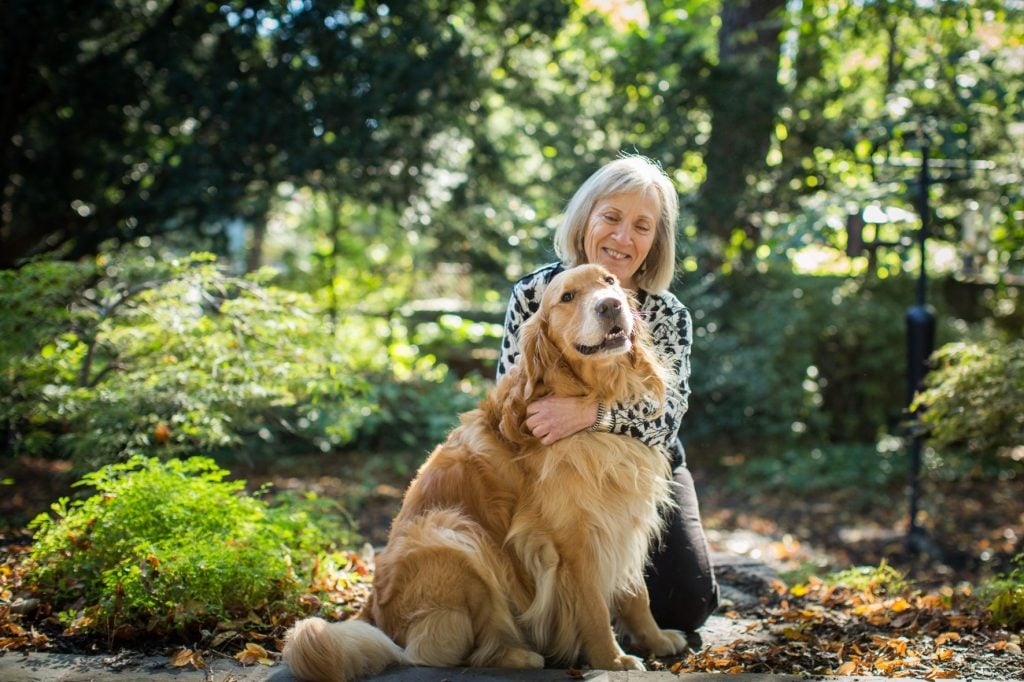
I began life as an inquisitive, joyous child in the nation’s largest metropolis. Yet I knew something was lacking for me. I found the missing element when I discovered the Rockies, the Wind Rivers, and the Cascades and engaged in long backpacking trips through rugged terrain, carrying all my gear and food, taking risks in numerous ways, and trekking with my dog Kelso (and other companions). I continue to be a naturalist, a birder, and a dog trainer. Kelso lived an amazing (almost) 16 years. I eventually got Prairie, who died at eight from cancer. I currently have Pika who is active at 13.5 years and is a therapy dog at a local nursing home. I began competition work (obedience, rally, scenting) with Prairie and continued with Pika (Fig. 3), who holds titles in competitive scenting. I am delighted that the Prize committee and graphic designer depicted me with a magnifying glass, a Sherlock Holmes’ hat, and a Golden Retriever (Fig. 4). That is how I would like to be remembered: as an economist detective with an obedient dog at her side.
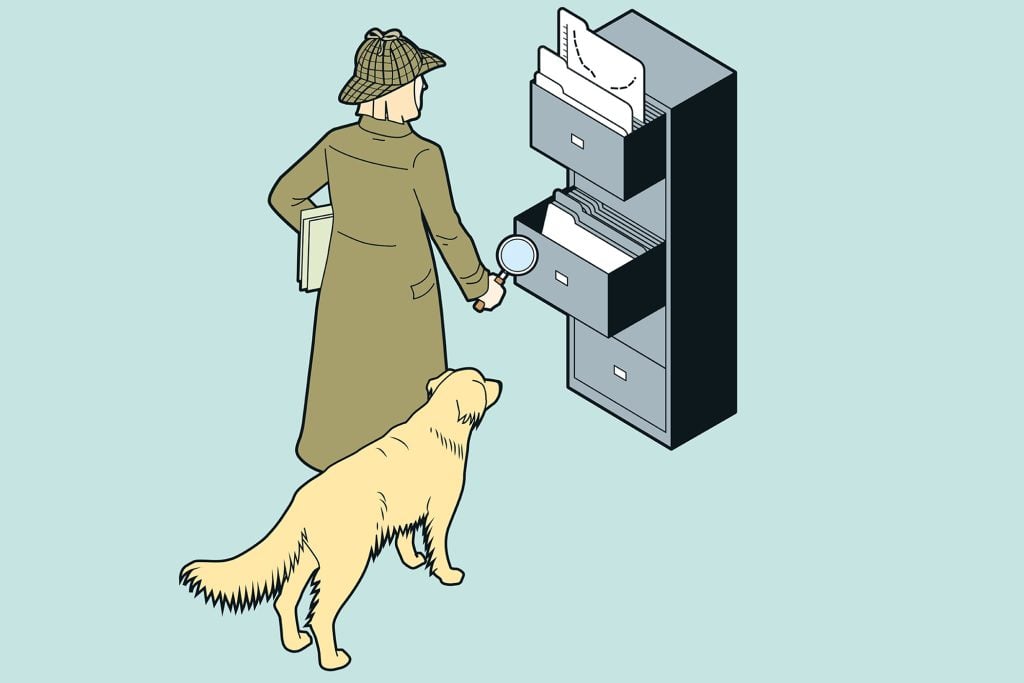
1. Microbe Hunters, first published in 1926, remains in print and on Kindle, as well as in Audible Audiobook format. Other laureates have also pointed to its influence, including Earl W. Sutherland, awarded the 1971 Nobel Prize in Physiology or Medicine.
2. Kahn was an expert in regulation and deregulated the airlines when he was chair of the U.S. Civil Aeronautics Board (1977/78). He began teaching at Cornell in 1947.
3. In that group Friedman, Stigler, Becker, Fogel, Coase, and Mundell are Laureates in Economic Sciences.
4. R.H. Coase, “My Evolution as an Economist,” (1994), unpublished version of a lecture in the “Lives of the Laureates” series, given at Trinity University, San Antonio, Texas on April 12, 1994.
© The Nobel Foundation 2024
Nobel Prizes and laureates
Six prizes were awarded for achievements that have conferred the greatest benefit to humankind. The 12 laureates' work and discoveries range from proteins' structures and machine learning to fighting for a world free of nuclear weapons.
See them all presented here.
